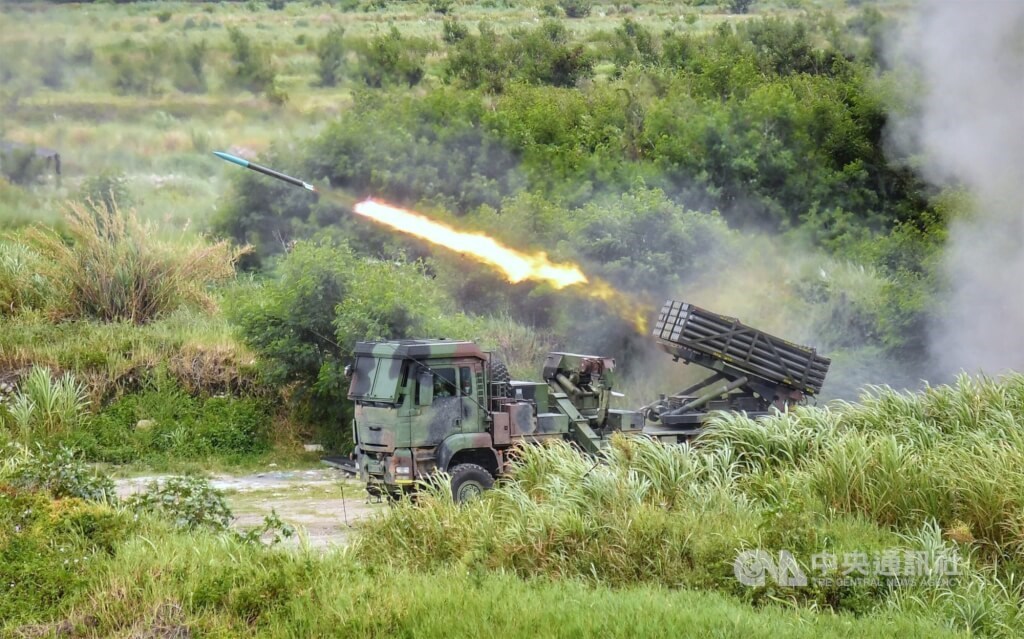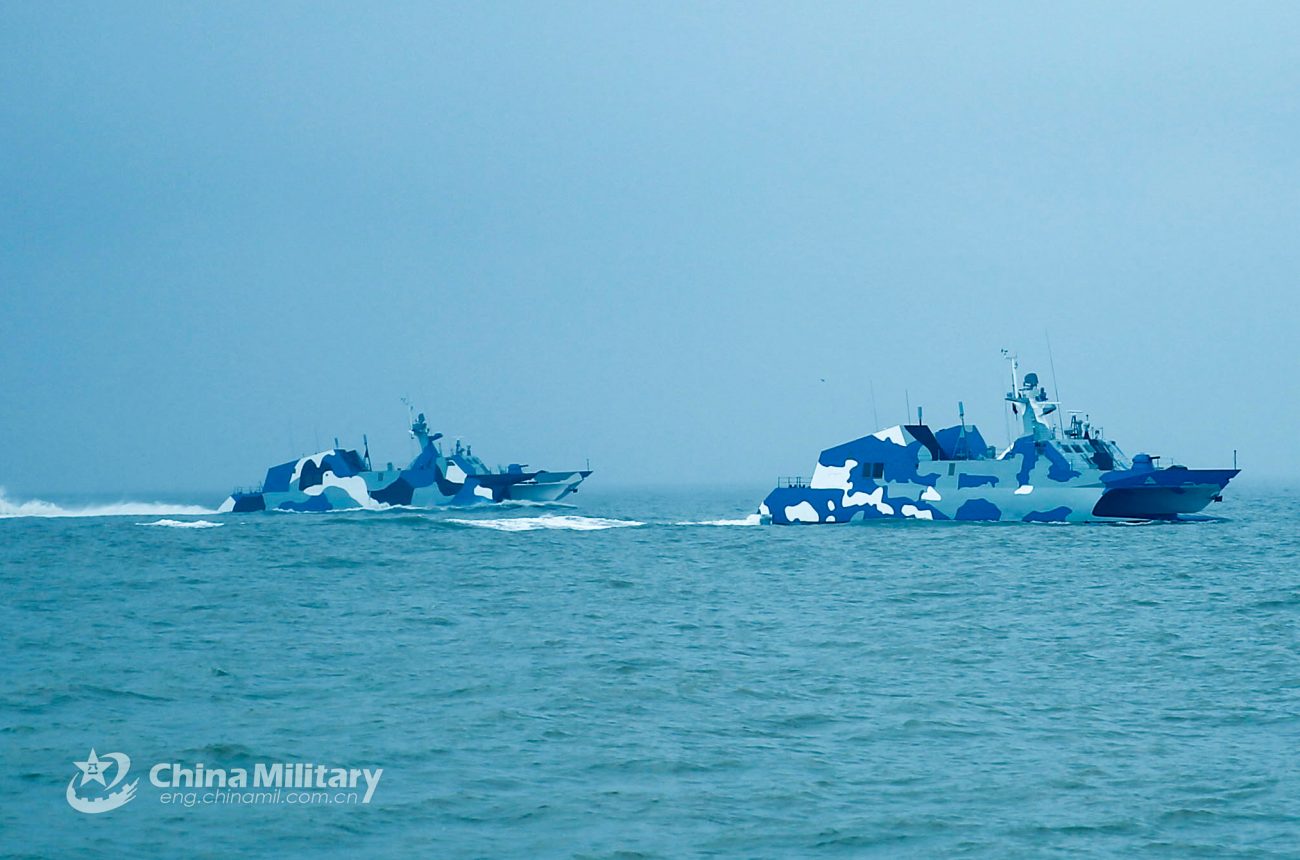Taiwan’s Thunderbolt-2000 Multiple Launch Rocket System (MLRS) exploded during a military exercise in the country’s southernmost Pingtung County, reported Central News Agency (CNA) on June 20.
China’s Hypersonic Weapons, Aircraft Carriers, Interceptor Missiles Only To Thwart US Belligerence – Military Experts
According to the Taiwanese Ministry of National Defense (MND), there were no casualties following the explosion.
“No deaths or injuries were reported after the accident at Jiupeng Military Base in Manzhou Township, Pingtung County, during which a rocket inside a Ray-Ting 2000 (Thunderbolt-2000) multiple launch rocket system failed to launch for unknown reasons,” the Taiwanese Army said in a statement, according to CNA.
This mishap happened days before China sent 29 warplanes into Taiwan’s air defense zone. According to reports, this was the third-largest provocation by the PLA this year.
The stuck rocket with a burned propellant damaged the truck on which the missile system was mounted.

Experts from the National Chung Shan Institute of Science and Technology (NCSIST), Taiwan’s state-owned primary indigenous weapon system provider, and an Army task force are investigating the cause behind the rocket launch malfunction.
Thunderbolt-2000 MLRS
Developed by the NCSIST, the road-mobile Thunderbolt-2000 or Ray-Ting (RT) 2000 entered service with the Taiwanese military sometime in late 2012. It can fight off mainland China’s potential amphibious and sea attacks.
The rocket launcher of the RT 2000 system, along with a self-reload crane, can be mounted onto the backside of a high mobility 8×8 cargo truck.
The launcher can be equipped with pods of unguided surface-to-surface rockets, and a sealed rocket pod’s design enables rapid reloading and lowers maintenance and storage requirements.

The RT-2000 can fire three types of rockets, the Mk15, Mk30, and Mk45, with a maximum range of 15 kilometers (9.3 miles), 30 kilometers, and 45 kilometers, respectively. It can range the mainland Chinese province of Fujian from Taiwan’s forward defense outposts of Kinmen and Matsu islands.
All three rocket types are powered by solid propellant motors and are equipped with four fins for in-flight stabilization. The rockets have a circular error probability of less than 1% and are armed with a high-explosive warhead or sub-munition.
Of these, the Mk15 is a 117mm rocket that is said to carry 6400 6.4mm steel balls, and the system can take a total of 60 rounds of Mk15 rockets in three pods.
While the Mk30 is a 180mm rocket that can carry either M77 dual-purpose improved conventional munitions (DPICM) bomblets or 8mm steel balls, the RT2000 uses 27 rounds of Mk30 180mm rockets in three pods, each housing nine rounds.
The MK45 is a 227mm rocket that can also carry either M77 bomblets or 8mm steel balls, and the system uses 12 rounds in two pods. The Mk45 can destroy large-sized warships and amphibious landing craft that could be sent by China’s People’s Liberation Army (PLA) to invade the island nation.
Also, in June 2021, a Taiwanese national daily, the Liberty Times, quoted a military source saying that an upgrade to the RT2000 MRLS has increased its maximum range to more than 100km.
China Prepares To Invade Taiwan By 2027
An MND report said on June 5 that the Chinese military will be capable of fighting Taiwan and its allies together by 2027, as per an earlier report by Eurasian Times.
The report noted the increase in the number of warships deployed by the PLA Navy along its southeastern coast to maintain its military advantage in the region and an attempt to build a system of intelligence warfare by 2027.

According to MND, such a posture would enable the Chinese naval and air forces to project power at greater distances from its territory, extending its reach of military operations and enabling it to battle the joint forces of Taiwan and its allies.
The news report followed the release of an alarming video of the PLA Navy’s landing operation drills in late May, raising speculations that President Xi Jinping is preparing the Chinese military to invade Taiwan.
As reported by Eurasian Times, the footage depicted an amphibious landing craft on a Chinese Navy transport ship with soldiers on board steered towards the target beach. Following the simulated operation, the vehicles headed toward the mother ship.
???⚡#China conducted a landing operation exercise simulating a move to retake #Taiwan island from US imperialist occupation.
The landing brigade of the 73rd Army of the #PLA Eastern Command in Fujian province (the province Taiwan is part of) organised the exercise.
1/3 pic.twitter.com/t4pfXr8AIm
— Yin Sura 尹苏拉 (@yin_sura) May 22, 2022
Also, a sporadic and dramatic recording of an alleged top-secret meeting of the People’s Liberation Army was released before the landing operation drills video was released.
The recording of this meeting which reportedly took place on May 14, purports to reveal the discussions between the Communist Party of China (CPC) and the PLA about the strategy to attack Taiwan, where the PLA officials are discussing a ‘ground strike’ plan.
Full vid of explosive leak of PLA's #War Mobilization Meeting
4 generals executed, many arrested after this file was exposed. This is said to be the biggest proactive rebellion from inside the #CCP's army!
The entire should be concerned. https://t.co/yc9KLVzsxq— Jennifer Zeng 曾錚 (@jenniferatntd) May 22, 2022
Experts believe the audiotape seems genuine, and according to activist Jennifer Zeng, the leak of the audio clip led to one lieutenant general and three major generals being sentenced to death, and several other officials were imprisoned.
- Contact the author at tanmaykadam700@gmail.com
- Follow EurAsian Times on Google News




